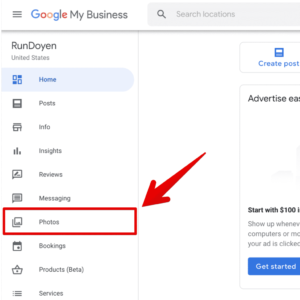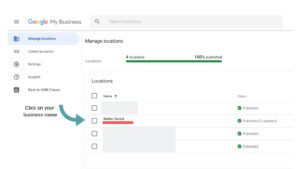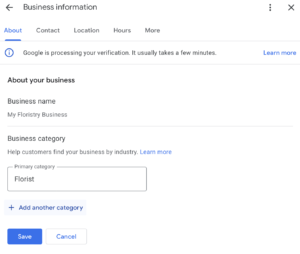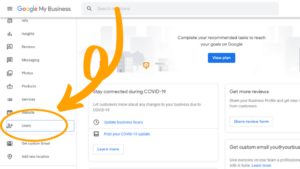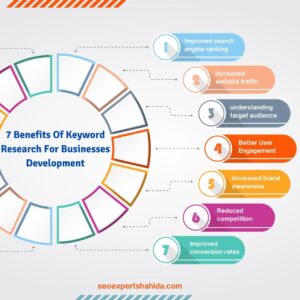Yes, SEO is worth it for small businesses. It boosts online visibility, attracts local customers, and drives organic traffic.
SEO helps small businesses compete with larger companies. By optimizing your website, you can rank higher in search results. This increases your chances of being found by potential customers. It also helps build brand credibility and trust. Local SEO is particularly beneficial, targeting customers in your area.
Effective SEO strategies can lead to higher conversion rates and better customer engagement. Investing in SEO is a cost-effective way to grow your small business. It’s a long-term strategy that delivers sustainable results. Even with a limited budget, proper SEO can yield significant benefits.
Benefits Of Seo For Small Businesses
Small businesses often wonder if investing in SEO is worth it. The answer is a resounding yes! SEO offers numerous benefits that can significantly boost a small business’s online presence, leading to increased traffic, better customer engagement, and higher sales. Let’s explore the key benefits of SEO for small businesses.
Increased Online Visibility
One of the primary benefits of SEO is increased online visibility. When your website ranks higher on search engine results pages (SERPs), more people will see it. Higher visibility means more potential customers will find your business.
Here are some ways SEO boosts visibility:
- Keyword Optimization: Using relevant keywords helps your site appear in search results.
- High-Quality Content: Informative and engaging content attracts more visitors.
- Backlinks: Quality backlinks from reputable sites improve your site’s authority.
Consider the following table for a clearer understanding:
| SEO Technique | Benefit |
|---|---|
| Keyword Research | Improves search ranking |
| Content Creation | Engages visitors |
| Link Building | Enhances credibility |
Targeted Traffic
SEO brings targeted traffic to your website. Unlike other forms of advertising, SEO targets users who are actively searching for your products or services. This means the visitors you get through SEO are more likely to convert into customers.
Benefits of targeted traffic include:
- Higher Conversion Rates: Visitors are more likely to make a purchase.
- Better User Engagement: Engaged users spend more time on your site.
- Reduced Bounce Rates: Relevant content keeps users on your site longer.
For instance, if you own a bakery and optimize for keywords like “best bakery in [Your City],” people searching for bakeries in your area will find you easily. This targeted traffic is more valuable than random visitors.
Cost-effective Marketing
SEO is a cost-effective marketing strategy for small businesses. Unlike paid advertising, which can be expensive, SEO focuses on organic traffic. While SEO requires an initial investment, the long-term benefits outweigh the costs.
Why SEO is cost-effective:
- Lower Cost per Lead: Organic leads are cheaper than paid leads.
- Free Traffic: Once optimized, your site attracts visitors without ongoing costs.
- Better ROI: Higher conversion rates lead to better returns on investment.
Consider these points:
| Marketing Strategy | Cost | ROI |
|---|---|---|
| SEO | Low | High |
| PPC Advertising | High | Medium |
| Social Media Ads | Medium | Variable |
Long-term Results
Unlike short-term marketing tactics, SEO offers long-term results. Once you achieve a high ranking, maintaining it requires less effort. Your website continues to attract organic traffic for months or even years.
Advantages of long-term SEO results:
- Consistent Traffic: Your site remains visible to searchers over time.
- Brand Authority: High-ranking sites are seen as more credible.
- Ongoing Sales: Sustained traffic leads to continuous sales.
For example, a well-optimized blog post can continue to attract visitors long after it’s published, providing ongoing value. This makes SEO a smart investment for small businesses looking for sustainable growth.
Factors To Consider For Small Businesses
Is SEO worth it for small businesses? This is a question many small business owners ask. Investing in SEO can seem daunting. There are several factors to consider before diving in. Let’s explore the key factors that small businesses should weigh.
Budget Constraints
Budget constraints are one of the biggest considerations for small businesses. SEO can be expensive, and every dollar counts. Here are some key points to consider:
- Initial Costs: Hiring an SEO expert or agency can cost anywhere from $500 to $5,000 per month.
- Ongoing Costs: SEO is not a one-time investment. You need ongoing efforts to maintain and improve your rankings.
- DIY SEO: Small businesses with tight budgets might consider handling SEO themselves. This can save money but requires time and effort.
Example Budget Table:
| Service | Cost Range |
|---|---|
| SEO Audit | $500 – $3,000 |
| Monthly Retainer | $500 – $5,000 |
| DIY Tools | $0 – $200 per month |
Small businesses must evaluate their budget before investing in SEO. It’s crucial to balance cost with potential ROI.
Competition Analysis
Understanding the competition is vital. Small businesses need to analyze their competitors’ SEO strategies. Here are some key steps:
- Identify Competitors: Make a list of your main competitors.
- Keyword Analysis: Check which keywords your competitors rank for.
- Content Quality: Evaluate the quality of content on competitors’ websites.
- Backlink Profiles: Analyze the backlinks your competitors have.
Competition analysis helps small businesses understand what they are up against. It provides insights into what works in their industry. This can guide their own SEO strategies.
Time And Resource Investment
SEO requires time and resources. Small businesses must be ready to invest both. Here are some considerations:
- Time Commitment: SEO is a long-term strategy. It can take months to see significant results.
- Resource Allocation: Small businesses need to allocate resources for content creation, link building, and technical SEO.
- Ongoing Efforts: SEO requires continuous efforts. You need to keep updating content, building links, and optimizing for new keywords.
Small businesses should evaluate their ability to commit time and resources. This is crucial for the success of their SEO efforts.
SEO Expertise
Expertise in SEO is crucial. Small businesses must decide whether to hire experts or handle SEO themselves. Here are some key points:
- Hiring Experts: Experts bring experience and knowledge. They can provide quicker results but come at a cost.
- In-House SEO: Training an in-house team can be a cost-effective solution. However, it requires time and effort.
- Freelancers: Hiring freelancers can be a middle-ground solution. They offer expertise without the high costs of agencies.
Small businesses need to assess their SEO expertise options. The right choice depends on their budget, time, and resource availability.
Steps To Implement SEO for Small Businesses
Small businesses often wonder if investing in SEO is worth it. The answer is a resounding yes. SEO helps small businesses improve their online visibility, attract more customers, and grow their revenue. Implementing SEO involves several essential steps. Let’s explore these steps in detail.
Keyword Research And Optimization
Keyword research is the foundation of any SEO strategy. It involves identifying the words and phrases potential customers use to search for products or services. Choosing the right keywords can significantly impact your website’s visibility.
Start by using keyword research tools like Google Keyword Planner or SEMrush. These tools help you find relevant keywords with high search volume and low competition. Once you have a list of keywords, integrate them into your website’s content. Focus on primary keywords for main pages and long-tail keywords for blog posts.
- Identify keywords related to your business.
- Use tools to analyze search volume and competition.
- Integrate keywords naturally into your content.
Avoid keyword stuffing, as it can harm your rankings. Instead, use keywords naturally to enhance the user experience.
Website Optimization
Website optimization is crucial for improving your site’s performance and user experience. A well-optimized website loads faster, is easy to navigate, and provides valuable content to visitors.
Begin by ensuring your website is mobile-friendly. Most users access websites through their smartphones. Use responsive design to ensure your site looks good on all devices. Additionally, optimize your website’s loading speed. Compress images, use browser caching, and minimize HTTP requests.
Create a clear and intuitive navigation structure. Users should find what they need quickly. Use internal linking to guide users to important pages.
| Optimization Task | Action |
|---|---|
| Mobile-Friendly Design | Use responsive design |
| Loading Speed | Compress images, minimize HTTP requests |
| Navigation | Create clear, intuitive menus |
Creating Quality Content
Creating quality content is vital for engaging your audience and improving your SEO. High-quality content attracts visitors, keeps them on your site longer, and encourages them to share your content.
Start by understanding your audience’s needs and interests. Create content that answers their questions and solves their problems. Use a mix of text, images, videos, and infographics to make your content more engaging.
Consistency is key. Regularly update your blog with fresh, relevant content. Use your target keywords naturally in your content, headings, and meta descriptions.
- Understand your audience’s needs.
- Create engaging, valuable content.
- Use a variety of content formats.
- Update your blog regularly.
Building Backlinks
Backlinks are links from other websites to your site. They signal to search engines that your content is valuable. Building high-quality backlinks can improve your site’s authority and rankings.
Start by creating shareable content that others want to link to. Reach out to industry influencers and ask them to share your content. Guest posting on reputable blogs is another effective way to earn backlinks.
Participate in online communities related to your industry. Share your expertise and link back to your content when relevant. Avoid low-quality link-building tactics, as they can harm your SEO.
- Create shareable content.
- Reach out to influencers.
- Guest post on reputable blogs.
- Participate in online communities.
Tracking And Analyzing Results
Tracking and analyzing your SEO efforts is essential to understand what works and what doesn’t. Use tools like Google Analytics and Google Search Console to monitor your website’s performance.
Track metrics like organic traffic, bounce rate, and conversion rate. Analyze which keywords drive the most traffic and which pages perform best. Use this data to refine your SEO strategy.
Regularly review your website’s performance. Adjust your strategy based on the insights you gain. This helps you stay ahead of your competition and continuously improve your SEO.
- Use Google Analytics and Search Console.
- Track key metrics.
- Analyze keyword performance.
- Refine your strategy based on data.

Credit: www.oyova.com
Common SEO Challenges For Small Businesses
Small businesses often ask, “Is SEO worth it?” The answer is yes, but they face unique challenges. Understanding these challenges helps in planning a successful SEO strategy. Below are some common SEO challenges for small businesses.
Limited Resources
Small businesses usually operate with limited budgets and small teams. This makes it tough to allocate resources for SEO.
Here are some common resource limitations:
- Financial Constraints: Hiring SEO experts or investing in tools can be costly.
- Time Constraints: SEO is time-consuming and small business owners wear multiple hats.
- Technical Expertise: Many small businesses lack in-house technical skills for SEO.
Here’s a quick comparison of resource allocation:
| Resource | Large Business | Small Business |
|---|---|---|
| Budget | High | Low |
| SEO Team | Dedicated Team | Owner/Small Team |
| Tools | Advanced Tools | Basic Tools |
Staying Updated With Algorithm Changes
Search engine algorithms change frequently. Staying updated is crucial for maintaining rankings.
Challenges include:
- Rapid Changes: Google updates its algorithm several times a year.
- Understanding Updates: Each update can impact rankings differently.
- Implementing Changes: Small businesses might not have the time to implement changes quickly.
Consider these tips to stay updated:
- Follow Industry Blogs: Websites like Moz and Search Engine Journal offer updates.
- Use Google Alerts: Set alerts for terms like “Google Algorithm Update”.
- Join Forums: Engage in SEO forums to get insights from experts.
Choosing The Right SEO Strategy
Selecting the right strategy can be confusing. Many small businesses don’t know where to start.
Key considerations include:
- Target Audience: Understand who your customers are.
- Local SEO: For local businesses, local SEO is crucial.
- Content Quality: High-quality content attracts more visitors.
Here’s a simple strategy outline:
- Keyword Research: Use tools like Google Keyword Planner.
- On-Page Optimization: Optimize meta tags and content.
- Content Marketing: Create valuable blog posts and videos.
- Link Building: Get backlinks from reputable sites.
Measuring ROI
Understanding the return on investment (ROI) for SEO is essential.
Challenges include:
- Tracking Metrics: Knowing which metrics to track can be confusing.
- Long-Term Results: SEO results take time, making ROI measurement tricky.
- Attribution: Identifying which actions led to specific results.
Consider these metrics for measuring ROI:
- Organic Traffic: Track the number of visitors from search engines.
- Conversion Rates: Measure how many visitors become customers.
- Keyword Rankings: Monitor your ranking for target keywords.
- Backlink Quality: Evaluate the quality of sites linking to you.
Using tools like Google Analytics and SEMrush can simplify this process.
Alternative Marketing Strategies For Small Businesses
Many small businesses wonder if SEO is worth the investment. While SEO can drive organic traffic, there are also other effective marketing strategies available. These alternative methods can complement or even replace SEO to help small businesses reach their target audience.
Social Media Marketing
Social media marketing is a powerful tool for small businesses. It allows direct interaction with your audience. Platforms like Facebook, Instagram, and Twitter can help you build brand awareness and loyalty.
Benefits of social media marketing:
- Cost-effective: Most social media platforms are free to use.
- Targeted advertising: Platforms offer advanced targeting options.
- Engagement: Direct communication with customers builds trust.
Here’s a simple table showing the advantages of different social media platforms:
| Platform | Key Benefit |
|---|---|
| Wide reach and diverse audience | |
| Visual content and younger audience | |
| Real-time updates and trending topics |
Engage with your audience through regular posts, stories, and live sessions. Respond to comments and messages promptly. This builds a loyal community around your brand.
Content Marketing
Content marketing involves creating valuable content to attract and retain customers. Blogs, videos, and infographics can educate and entertain your audience.
Benefits of content marketing:
- Builds authority: High-quality content establishes your business as an industry leader.
- Drives traffic: Useful content attracts organic traffic to your website.
- Engages audience: Engaging content keeps visitors on your site longer.
Types of content to consider:
- Blogs: Share tips, how-tos, and industry news.
- Videos: Create tutorials, product demos, and behind-the-scenes content.
- Infographics: Visualize data and processes.
Regularly update your content to keep it fresh and relevant. Share it across your social media channels to reach a wider audience.
Email Marketing
Email marketing remains one of the most effective ways to reach customers. It allows you to send personalized messages directly to your audience’s inbox.
Benefits of email marketing:
- Cost-effective: Email marketing is affordable and offers a high ROI.
- Personalization: Tailored messages can increase engagement and conversions.
- Measurable: Track open rates, click rates, and conversions easily.
Types of email campaigns:
- Newsletters: Share updates, news, and valuable content.
- Promotional emails: Inform customers about sales and special offers.
- Welcome emails: Greet new subscribers and introduce your business.
Use an email marketing tool to automate your campaigns and segment your audience. This ensures your messages are relevant and timely.
Local Business Listings
Local business listings help small businesses appear in local search results. Platforms like Google My Business and Yelp can improve your local visibility.
Benefits of local business listings:
- Increased visibility: Appear in local search results and maps.
- Customer reviews: Positive reviews build trust and attract new customers.
- Local SEO: Improve your search rankings for local queries.
Steps to optimize your local business listings:
- Claim your listing: Ensure your business is listed on all relevant platforms.
- Complete your profile: Add accurate information, including address, phone number, and business hours.
- Encourage reviews: Ask satisfied customers to leave positive reviews.
Regularly update your listings to keep information current. This helps maintain your visibility and reputation in local search results.
Paid Advertising
Paid advertising can drive immediate traffic and leads to your business. Platforms like Google Ads and Facebook Ads offer targeted advertising options.
Benefits of paid advertising:
- Immediate results: Get traffic and leads quickly.
- Targeting options: Reach a specific audience based on demographics, interests, and behaviors.
- Measurable: Track performance and ROI easily.
Types of paid advertising:
- Search ads: Appear at the top of search engine results.
- Display ads: Show visual ads on websites and apps.
- Social media ads: Target users on platforms like Facebook and Instagram.
Set a budget and monitor your campaigns regularly. Adjust your strategy based on performance to maximize your ROI.

Credit: attrock.com
Case Studies: Success Stories Of Small Businesses With SEO
Small businesses often wonder if investing in SEO is worth it. The answer lies in real-life success stories. Many small businesses have seen significant benefits from SEO. Let’s delve into some case studies to see how SEO has transformed these businesses.
Increase In Website Traffic And Rankings
One small bakery used SEO to improve its online presence. Their website traffic increased by 200% within six months. Key strategies included:
- Using local keywords like “best bakery in [city]”
- Optimizing meta descriptions and title tags
- Creating high-quality blog posts about their products
Here is a comparison table showing their traffic before and after implementing SEO:
| Month | Website Traffic (Visits) |
|---|---|
| January | 500 |
| June | 1500 |
By focusing on SEO, they not only increased traffic but also saw their rankings improve. Their website moved from the third page to the first page on Google for key search terms.
Improvement In Conversion Rates
A local plumbing business saw a significant improvement in conversion rates after implementing SEO. They used the following tactics:
- Optimizing landing pages for better user experience
- Adding clear call-to-action buttons
- Improving page load speed
Before SEO, their conversion rate was 2%. Post-SEO, it jumped to 5%. This meant more inquiries and booked services. Here’s a breakdown of their conversion rates:
| Month | Conversion Rate (%) |
|---|---|
| January | 2% |
| June | 5% |
Their improved website not only attracted more visitors but also converted them into paying customers.
Expansion Of Customer Base
An online handmade jewelry store expanded its customer base through targeted SEO strategies. They focused on:
- Long-tail keywords like “handmade silver bracelets for women”
- Creating engaging content about jewelry-making
- Building backlinks from reputable sites
Here are the results:
| Month | New Customers |
|---|---|
| January | 50 |
| June | 150 |
With SEO, they reached customers beyond their local area. Their customer base grew from local to national, even international.
Boost In Revenue
A small tech startup experienced a revenue boost after investing in SEO. They focused on the following:
- Optimizing product pages
- Adding customer reviews and testimonials
- Implementing a strong internal linking strategy
Revenue growth can be seen in this table:
| Month | Revenue ($) |
|---|---|
| January | 10,000 |
| June | 25,000 |
Their revenue more than doubled, showing the power of SEO in driving sales.
Frequently Asked Questions
Does SEO Really Work For Small Business?
Yes, SEO works for small businesses. It improves online visibility, attracts local customers, and boosts sales. Investing in SEO can lead to long-term growth and success.
How Much Should A Small Business Pay For SEO?
A small business should budget $500 to $2,500 per month for SEO. Costs vary based on services and expertise.
Is It Worth Paying For SEO?
Yes, paying for SEO is worth it. It boosts website visibility, increases traffic, and improves search engine rankings, driving more business.
Is SEO Still Relevant In 2024?
Yes, SEO is still relevant in 2024. It remains crucial for improving website visibility, driving traffic, and enhancing user experience. Effective SEO helps businesses stay competitive in search engine rankings.
Conclusion
SEO is a valuable investment for small businesses. It enhances online visibility, attracts targeted traffic, and boosts sales. Ignoring SEO means missing out on potential customers. Implementing SEO strategies can lead to long-term growth and success. Don’t underestimate its power in driving business growth.
Start optimizing your website today.



